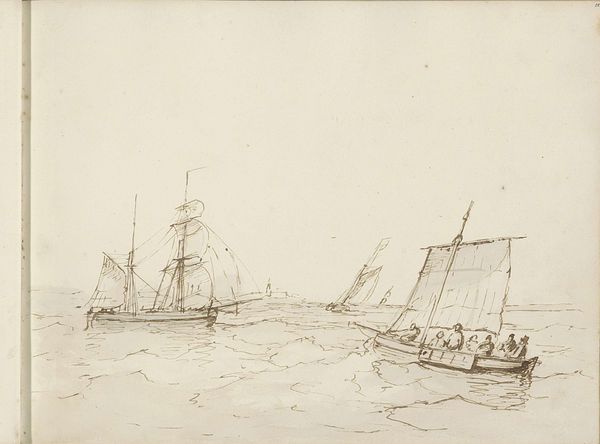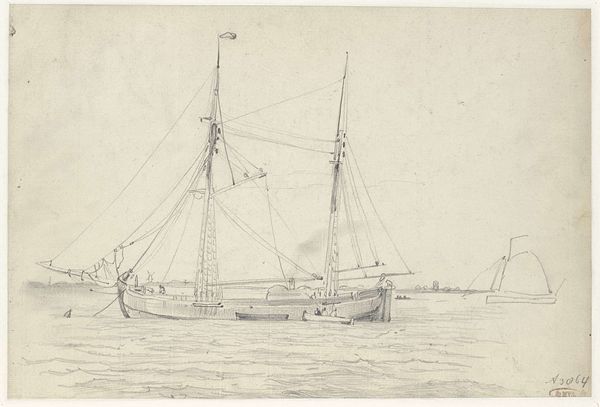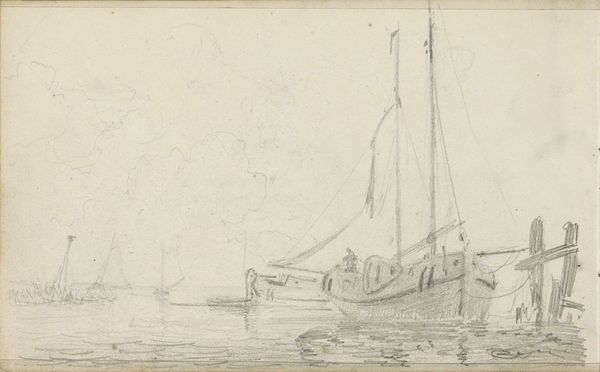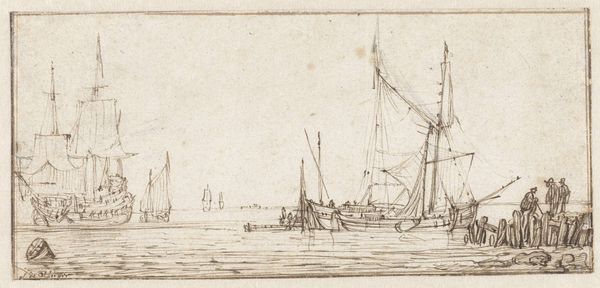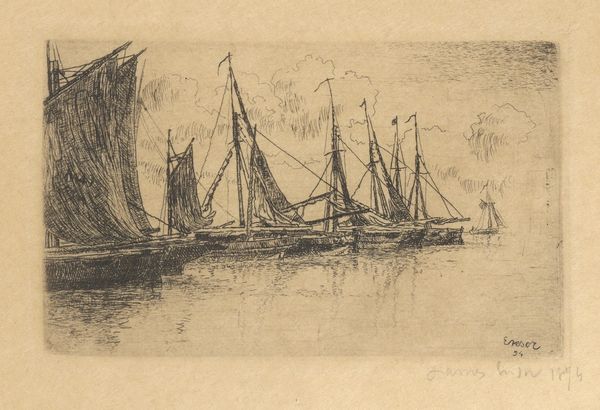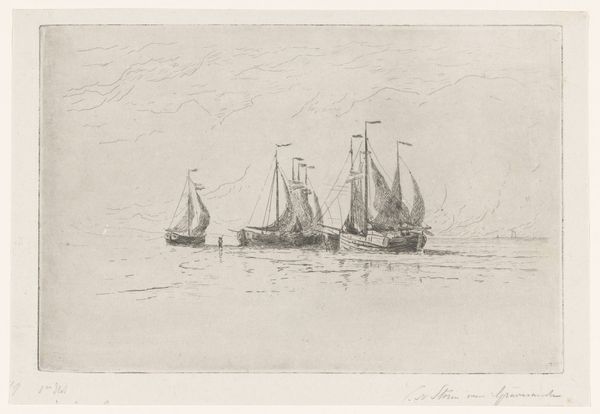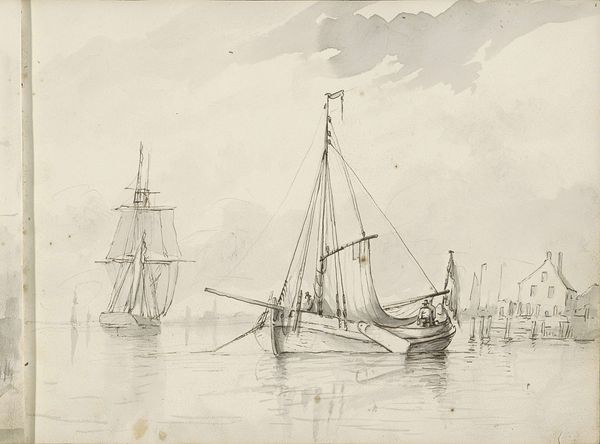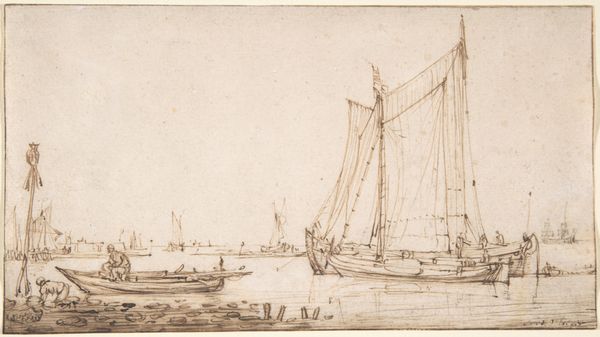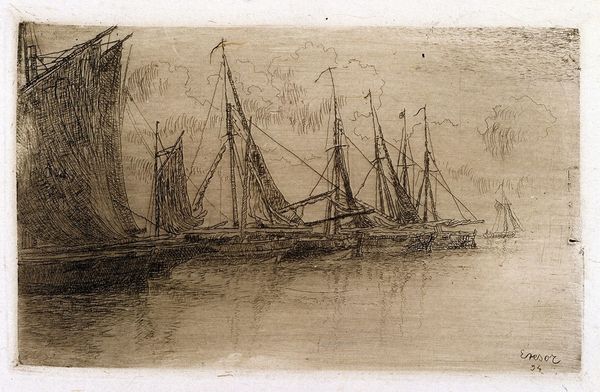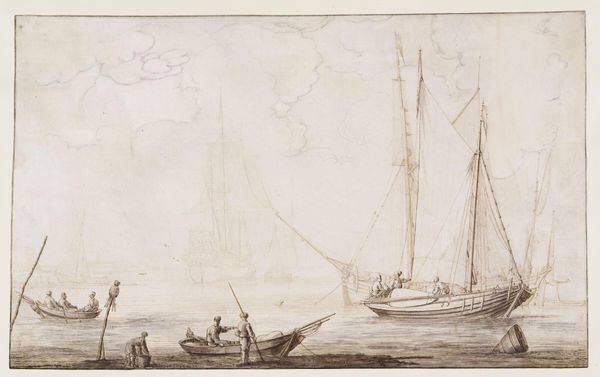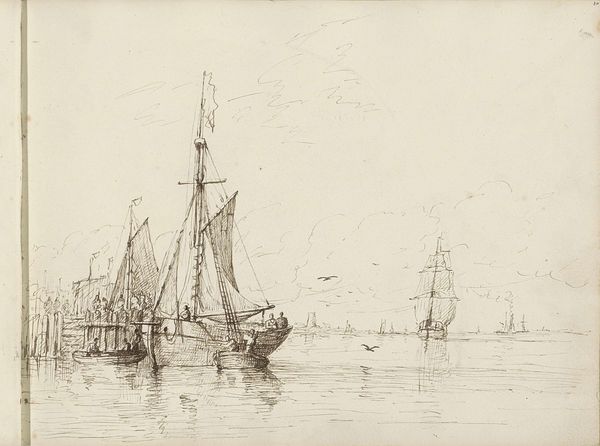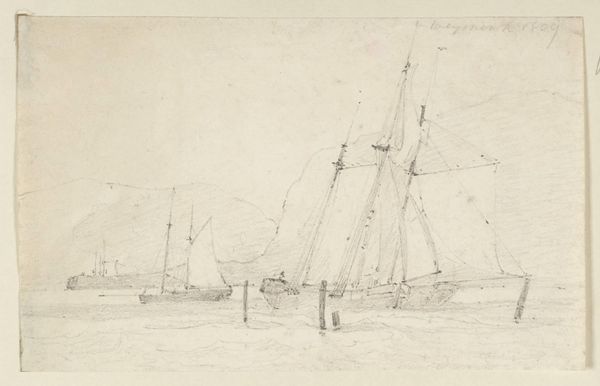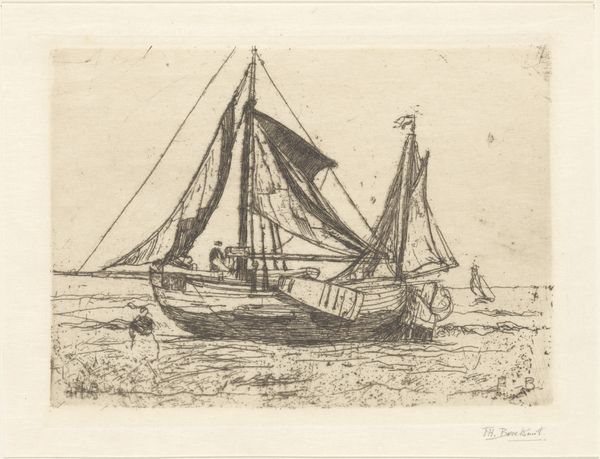
drawing, paper, pencil
#
drawing
#
dutch-golden-age
#
impressionism
#
pencil sketch
#
landscape
#
paper
#
pencil
#
realism
Copyright: Rijks Museum: Open Domain
Curator: Ah, "Zeilschepen op het water," or "Sailing Ships on the Water," a pencil drawing from 1875 by George Clausen. It has that fleeting impressionistic quality to it. Editor: It’s incredibly still. Almost haunting, with the muted greys and the stillness of the water mirroring the ships. There’s a real sense of quiet labor and the weight of maritime life. Curator: Clausen, a British artist, was deeply influenced by the Hague School and later became a key figure in British Impressionism. We see hints of both here. It's not just a pretty picture; it reflects the increasing industrialization and global trade networks of the late 19th century. Waterways became thoroughfares of both commerce and imperial expansion. Editor: Absolutely. These aren't just boats, they're a physical manifestation of capital and connection. How interesting that the caption in the lower part of the paper reads "Amsterdam Saturday Evening." Is it a study for a larger work, or a simple observation from an artist of place and time, considering the artist being British and the site Dutch. I wonder if that title written directly onto the work has been curated and researched, though? Curator: We're looking into it! But given Clausen's stylistic shift toward en plein air painting and social realism, he likely drew this on location. The sailboats symbolize the connectivity that Amsterdam embodied as a trading center. I mean the style and subject bring up strong 17th Century imagery, even if made in 1875. Editor: Yes, exactly! There’s that undeniable link. This image also speaks to class dynamics, doesn’t it? It would be enlightening to examine which communities benefited and who was displaced in port cities as nautical shipping power grew, connecting it to debates about global accessibility in art, especially its visual representation. The way the ships reflect upon the surface also could talk to contemporary gender or feminist study; mirrors being such historically gendered symbols, perhaps speaking of "Amsterdam" in connection to those historic stereotypes. Curator: It adds a layer of depth when considered within these broader narratives, doesn't it? And there’s no real easy, simple understanding! Editor: Exactly! So many questions and so little time.
Comments
No comments
Be the first to comment and join the conversation on the ultimate creative platform.
